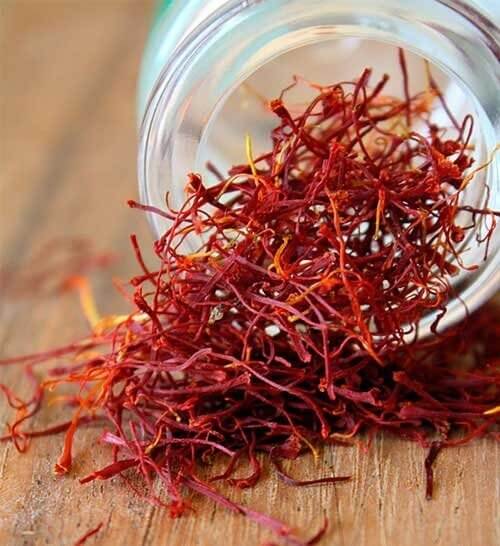HOW TO USE SAFFRON?

HOW TO USE SAFFRON? SPARINGLY.
Saffron is the red/orange stigmas of the Crocus sativus flower. Harvested in late Autumn, this delicate but extremely pungent and flavoursome spice has been used in cooking, medicine and as a dye, for thousands of years.
Believed to originate from the Mediterranean area, the popularity of saffron spread around the world. It was adopted by many cultures and religions and is now grown and cultivated in many countries, including Spain, Iran, India and the UK to name a few.

The best quality saffron should be dark red with orange tips. One of the finest growing regions in the world is La Mancha in Spain. La Mancha saffron is recognised and supported by its DOP status, meaning that all producers in the La Mancha region adhere to strict guidelines and practices. This ensures that the quality remains outstanding and production limited.

How to use saffron in cooking is quite simple and a little goes a long way. When using to add flavour as well as the distinct colour, make sure you add 4 or 5 stigmas to your cooking liquor and let it infuse for a couple of minutes before adding to your rice, fish or flour. This way all the flavour and colour will be evenly distributed.
A classic but very simple dish to try out your saffron is Paella. Please see the recipe and method below:
Chicken and rabbit paella
Serves 2
Ingredients
1 white onion
2 cloves of garlic
4 chicken thighs (skinned and de-boned)
4 pieces of rabbit (ask your butcher to prepare. You should get 6-8 pieces, then freeze the rest)
1lt fish stock
100g La Bomba rice
1 whole fresh artichoke or ½ jar of grilled artichoke hearts. Or 5 whole runner beans, whatever is in season.
50g frozen peas
1 whole lemon
½ red pepper (optional, for decoration rather than flavour)
1tsp dried mountain rosemary
1tsp turmeric* (optional. Will add colour but not mask the flavour of the saffron)
1 whole red chili
1tsp Hot smoked paprika
4-5 saffron strands
3 bay leaves
Seasoning
Method
Dice the onion and crush the garlic. Then place in a small paella pan or large frying pan with a glug of olive oil on a low heat, so to slowly cook but not burn.
Whilst the onions and garlic are cooking, put the fish stock in a saucepan and add the (optional turmeric), rosemary, whole chili, saffron and bay leaves and bring to the boil then turn down to a simmer.
The onions & garlic should be soft and cooked, so remove and put into a bowl.
Place the chicken and rabbit in a mixing bowl and season with salt, pepper and the paprika. Mix thoroughly, to ensure each piece is well seasoned.
Return the paella / frying pan back and turn up to a medium heat adding another glug of olive oil.
Seal all the chicken and rabbit, turning regularly to ensure good colour. Cook for about 10 minutes and turn the heat down a little if you think it is too hot.
Whilst the meat is cooking, cut the artichoke in 8 wedges or four slices if using beans. Cut the red pepper into 4 or 6 strips and the lemon into 6 or 8 wedges, removing and visible pips.
Spread the meat out evenly in the pan then place the artichoke or beans and peas equally in the gaps. Then sprinkle the rice evenly all over.
DO NOT TOUCH THE MEAT OR STIR THE PAN AGAIN
Then, using a ladle or jug, pour in the simmering fish stock, gently knocking off and rice that is sat on top of the meat, so that all the rice is absorbed. Then place the lemon wedges and red pepper equally around the pan so it look decorative.
Bring to the boil then turn to a very low simmer.
Cook for 20-25 mins. This is the tricky and key part to getting the paella right and achieving the much prized ‘socarrat’ at the bottom of the pan. This is why you must not mix or stir the pan. The moisture will bubble away, but don’t switch it off straight away, keep listening as you hear the moisture cook out. All the natural sugars will start to stick to the bottom of the pan and develop a wonderful flavour. After the moisture has visibly gone, simmer for another 5 minutes and then take it off and relax for 5 minutes, before going in……..If you haven’t quite got the ‘socarrat’, remember for next time and cook for another minute or two.
